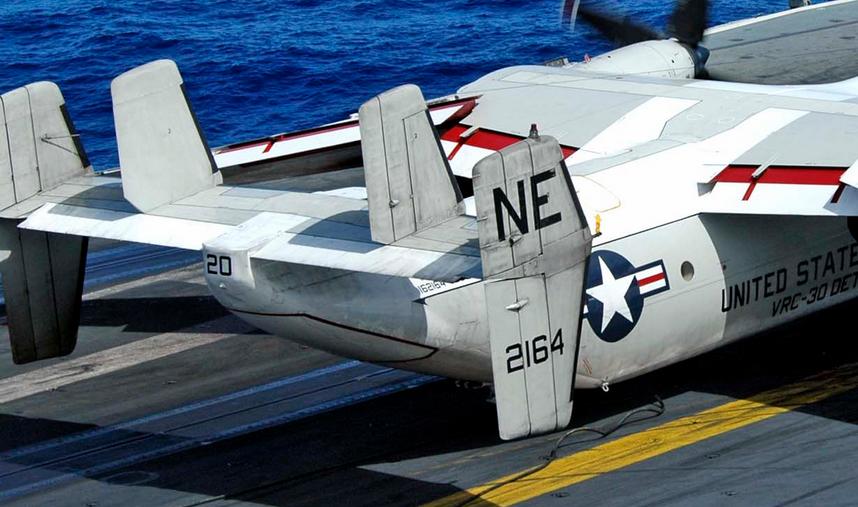As visible in the following picture
the left inboard stabilizer doesn't have a rudder but the right one does.
Wikipedia on the C-2 describes it as:
The C-2 has four vertical stabilizers, of which three are fitted with rudders. A single vertical stabilizer large enough for adequate directional control would have made the aircraft too tall to fit on an aircraft carrier hangar deck. The four-stabilizer configuration has the advantage of placing the outboard rudder surfaces directly in line with the propeller wash, providing effective yaw control down to low airspeeds, such as during takeoff and landing. The inner-left stabilizer lacks a rudder, and has been called the "executive tail", as it has nothing to do compared to the other three.
The rationale explains the primary design, but no explanation for the "executive" tail. Can anyone explain why the C-2 is designed this way?


